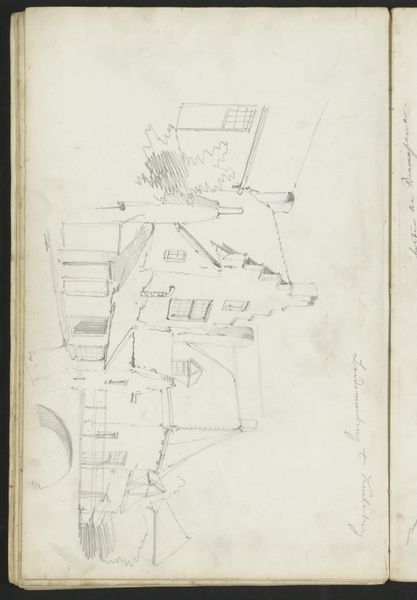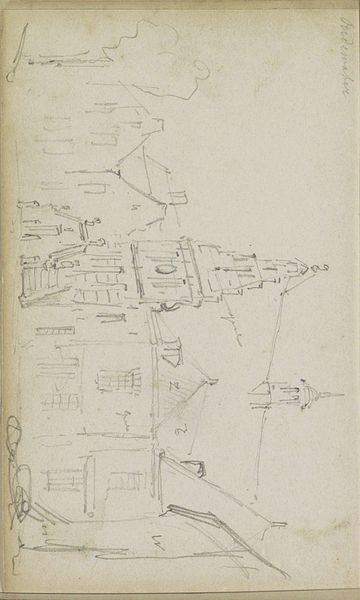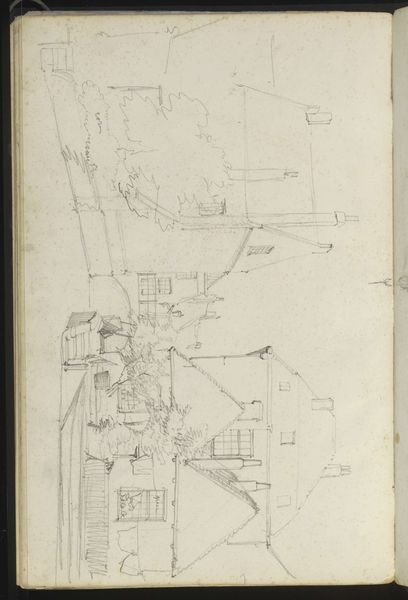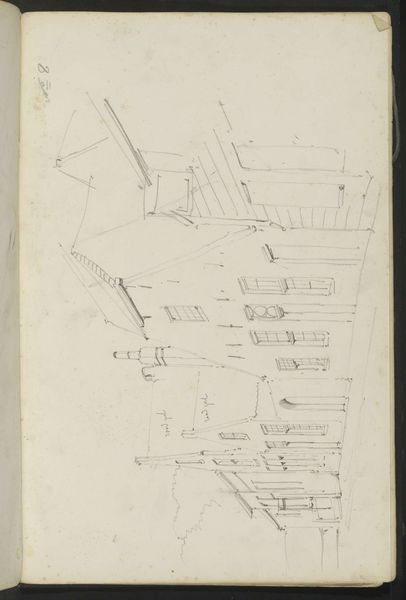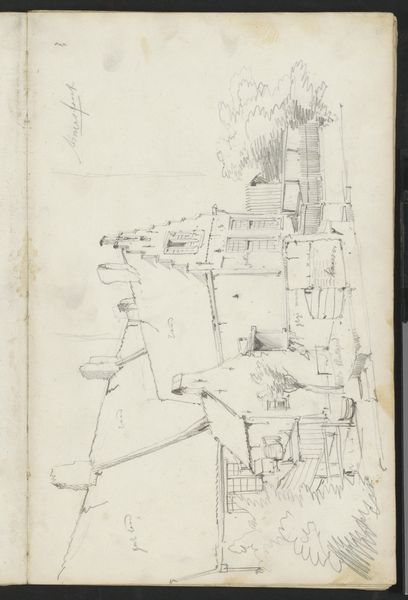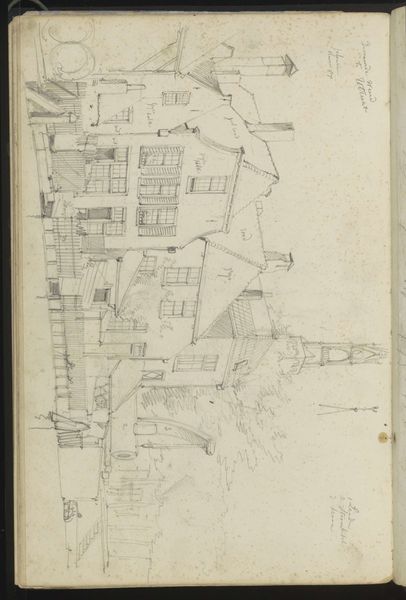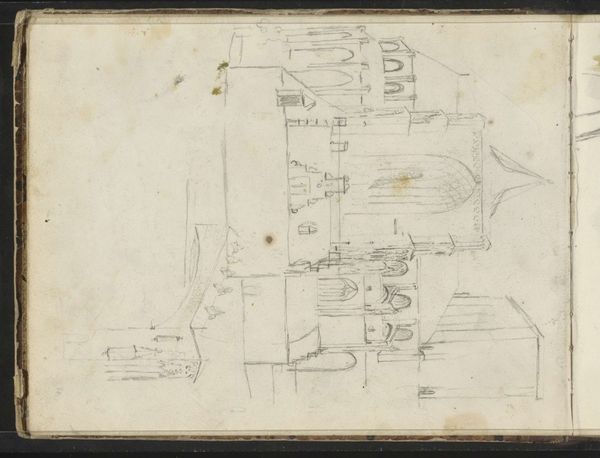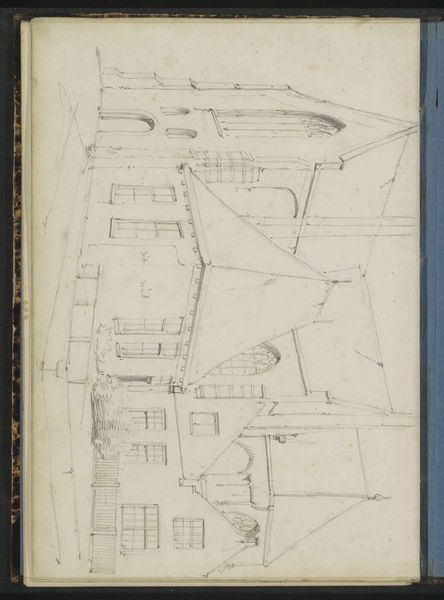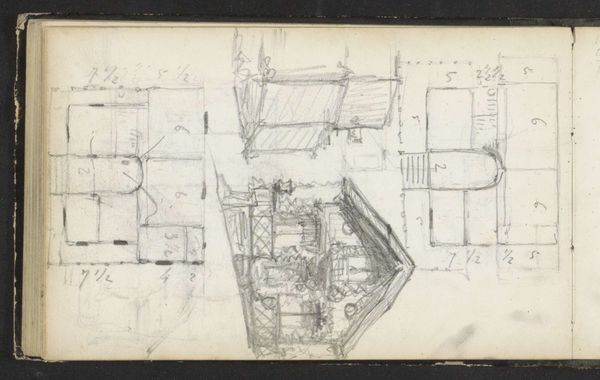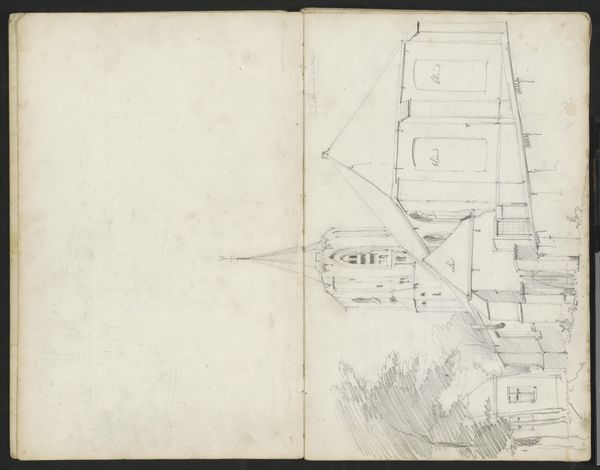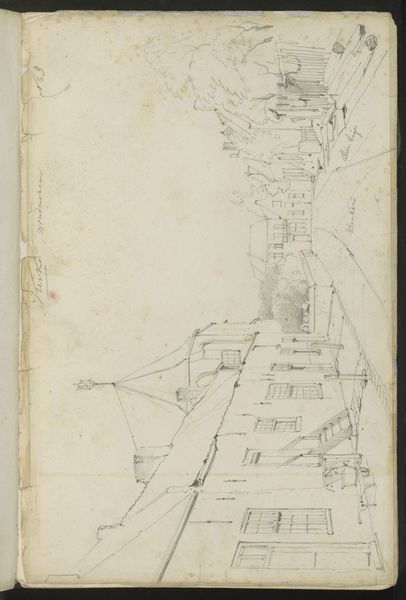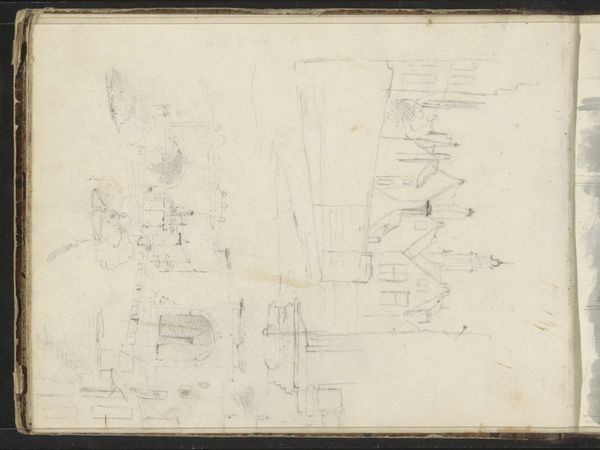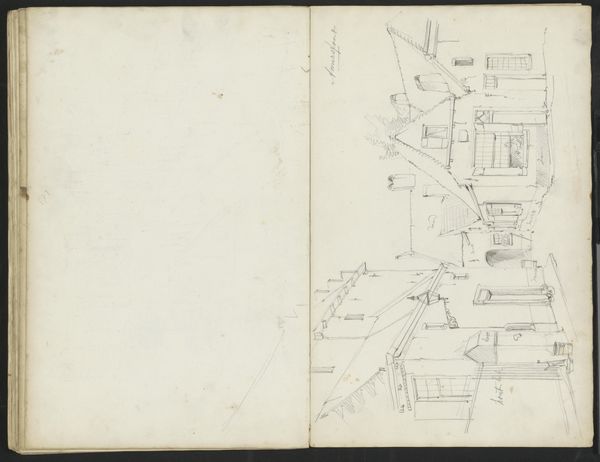
drawing, pencil
#
drawing
#
aged paper
#
toned paper
#
quirky sketch
#
pen sketch
#
sketch book
#
landscape
#
personal sketchbook
#
pen-ink sketch
#
pencil
#
pen work
#
sketchbook drawing
#
cityscape
#
sketchbook art
#
realism
Copyright: Rijks Museum: Open Domain
Editor: So, this drawing, "Groenteverkoopster op de Achterstraat te Culemborg" by Willem Koekkoek, was done sometime between 1849 and 1895, using pen, ink and pencil on paper. It's really just a quick sketch, but the architecture seems very precisely drawn. What stands out to you? Curator: It's interesting to consider the materials Koekkoek employed and what they tell us about the image's purpose. The use of pencil and ink suggests this wasn’t intended as a finished, marketable artwork, but more of a study, a way of documenting and understanding the urban environment. It’s about the process of seeing and recording. Editor: Right. It feels very immediate and utilitarian, like the artist just wanted to capture the scene. Curator: Exactly. Look at the details he chose to emphasize – the lines of the buildings, the structure of the market stall. He's examining the infrastructure that facilitates daily commerce and community life. Think about the social context: Culemborg was a small city. Editor: So, you're saying it is less about aesthetics and more about documentation of everyday labor? Curator: Precisely. And we should consider the value of the sketchbook itself. The physical act of sketching makes the artist more attuned to the scene. Was Koekkoek trying to point out social strata? Was he challenging, supporting, or ignoring the economic context? These are key points in this study. Editor: That's really interesting. I hadn't thought about it in terms of the labor that went into even the making of the sketch, let alone what the sketch depicts. Curator: Yes, it reminds us that art is never separate from the means and conditions of its production and its context within the economic landscape. Editor: Well, I’ve certainly got a new appreciation for sketchbook art! Curator: Me too. Examining art through a materialist lens reveals these hidden narratives.
Comments
No comments
Be the first to comment and join the conversation on the ultimate creative platform.
